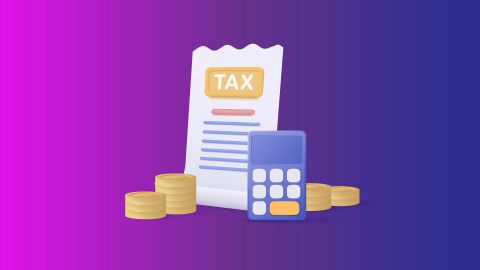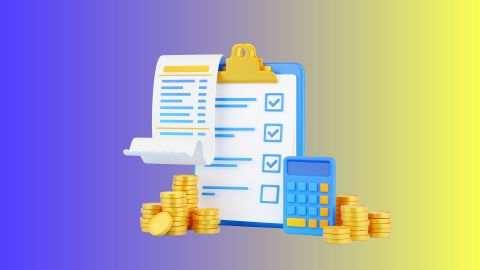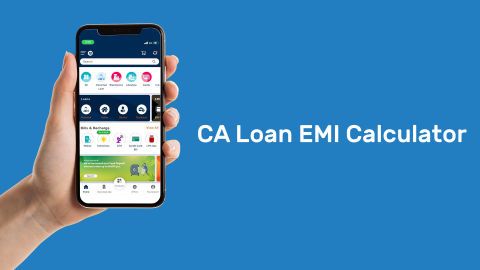Features of management accounting
Here are some of the salient features of management accounting:
Provides both financial and non-financial data to business management teams
Provides quantitative and qualitative information
Helps business owners formulate policies, forecast performance, and create strategies
Aids in setting short-term and long-term goals
It is dependent on cost accounting
Functions of managerial accounting
The three primary functions of managerial accounting are:
Planning: It provides both financial and non-financial insights that help management set objectives, design strategies, and prepare budgets. This function focuses on forecasting performance, setting targets, and allocating resources to achieve organisational goals.
Controlling: It monitors actual performance against plans and budgets, highlighting variances and their causes. By analysing these differences, management can take corrective actions to ensure the business remains aligned with its goals.
Decision-making: It equips management with relevant data and analysis to make informed choices. This includes trend analysis, forecasting, profitability assessments, cost evaluations, and support for strategic decisions such as pricing, investments, and production planning.
Importance of management accounting
The core purpose of managerial accounting is to support management in carrying out its key functions of planning, organising, directing, and controlling. It helps in the following ways:
Provides data: It offers essential historical and current data for planning. This information shows business growth patterns and supports accurate forecasting.
Analyses information: Through ratios, trend analysis, and categorisation (such as purchases by period, supplier, or region), data is presented in a meaningful way to aid planning and decision-making.
Supports communication: It acts as a medium to share plans and actions across the organisation. Initially, it highlights feasibility and consistency, and later, it tracks progress and roles in execution.
Drives goal achievement: It translates strategies into actionable business goals. Budgetary control and standard costing, as part of management accounting, ensure these goals are achieved.
Incorporates qualitative factors: Beyond numbers, it also considers non-financial aspects like industry cycles or R&D capabilities, gathered through surveys or assessments, to guide decisions.
Scope of management accounting
Managerial accounting focuses on maximising profit and minimising losses by presenting data in a way that helps managers anticipate financial issues and make informed decisions. Its scope covers a wide range of business functions, including the following:
Relies on financial data: It reorganises information from financial statements and cannot function without a proper financial accounting system.
Explains causes: Unlike financial accounting, which only shows results like profit or loss, managerial accounting examines the reasons behind those results.
Uses practical techniques: It applies methods such as standard costing, marginal costing, project appraisal, and control accounting for easier analysis.
Evaluates business impact: By comparing current data with historical records, it helps assess the outcomes of business decisions.
Supports planning: It assists management in setting objectives, designing plans, and measuring departmental performance.
Enables forecasting: It provides insights to ease the impact of potential problems and supports future-oriented decisions.
Role of management accounting
Management accounting supports managers in making informed business decisions. Often referred to as cost accounting, it involves identifying, analysing, interpreting, and sharing financial information that helps in achieving company goals. The data covers all areas of accounting, especially the costs related to products and services purchased by the business.
Management accountants prepare budgets to outline operational plans and use performance reports to highlight differences between actual results and budgeted figures.
Benefits of undertaking management accounting
Below are the main benefits of managerial accounting.
Get in-depth analysis to make wise business decisions
Identify issues with your business model early on
Forecast profit margins for particular goods and services
Prepare data for financial accounting reports
Conduct a break-even analysis
Determine stock valuation
Strategize for the future
Managerial accounting techniques
Managerial accounting makes use of several techniques to help businesses plan, control, and make informed decisions. Some of the key ones include:
Margin analysis: Focuses on evaluating the additional benefits of production changes. It includes breakeven analysis to determine the best sales mix for products.
Constraint analysis: Reviews production processes to identify bottlenecks, inefficiencies, and their effect on revenue and profitability.
Capital budgeting: Helps in making decisions about large investments. Techniques like Net Present Value (NPV) and Internal Rate of Return (IRR) are used to evaluate capital expenditure projects.
Inventory valuation and product costing: Involves analysing the costs of products and inventory. It includes allocating overheads, calculating the cost of goods sold (COGS), and using activity-based costing to assign costs more accurately.
Trend analysis and forecasting: Examines cost and performance patterns to forecast future outcomes. It also highlights unusual variances and explores their causes.
Differences between management accounting and financial accounting
Feature
|
Financial Accounting
|
Management Accounting
|
Primary Audience
|
External stakeholders (investors, creditors, regulators)
|
Internal stakeholders (managers, executives)
|
Purpose
|
Present a standardized view of financial health and performance
|
Support internal decision-making, planning, and control
|
Rules and Standards
|
Strict adherence to GAAP or IFRS for consistency and comparability
|
No mandatory external reporting standards; flexible and customizable
|
Type of Information
|
Primarily financial, historical data
|
Both financial and non-financial (qualitative) data, including forecasts and budgets
|
Time Orientation
|
Historically focused (past transactions and performance)
|
Future-oriented (forecasting, budgeting, strategic planning)
|
Level of Detail
|
Aggregated and summarized for a broad overview
|
Detailed and granular, specific to departments, products, or projects
|
Types of Reports
|
Standardized financial statements (balance sheet, income statement, cash flow statement)
|
Budgets, cost analyses, variance analyses, performance evaluations
|
Legal Requirement
|
Often mandatory for public companies
|
Not legally required, but highly useful for internal management
|
Differences between management accounting and cost accounting
Feature
|
Management Accounting
|
Cost Accounting
|
Purpose
|
Provides financial and operational insights to support planning, control, and strategic decisions.
|
Tracks, measures, and manages business costs linked to production or services.
|
Scope
|
Broad, covering cost, financial, and operational data for overall business management.
|
Narrow, focused mainly on cost determination, analysis, and control.
|
Focus Area
|
Budgeting, forecasting, strategy formulation, performance evaluation, and business growth.
|
Cost monitoring, cost reduction, and efficiency within operations or service delivery.
|
Time Orientation
|
Future-focused, using past data and projections for planning, forecasting, and decision-making.
|
Past-focused, using historical data to analyse and evaluate performance.
|
Data Type
|
Includes quantitative (financial results) and qualitative (trends, feedback, market insights) information.
|
Relies on quantitative cost figures such as cost per unit, overheads, and efficiency ratios.
|
Users
|
Used by top management, executives, and managers across departments for strategic choices.
|
Used mainly by operational staff like production managers and cost accountants.
|
Reporting
|
Flexible and customised reports designed to meet management needs and aid in decision-making.
|
Structured and detailed reports such as variance analyses and cost sheets.
|
Dependency
|
Depends on inputs from both cost accounting and financial accounting systems.
|
Can operate independently, especially for specific cost analysis purposes.
|
Legal Requirement
|
Not mandatory by law.
|
Sometimes legally required in regulated sectors or under government contracts.
|
Conclusion
Management accounting provides managers with financial and non-financial insights for effective planning, control, and decision-making. It uses techniques like margin analysis, capital budgeting, and activity-based costing to optimise performance. Especially useful for professionals seeking CA loans or professional loans, it helps forecast profitability, monitor resources, and make strategic decisions, supporting both short- and long-term business goals.
*Terms and conditions apply









